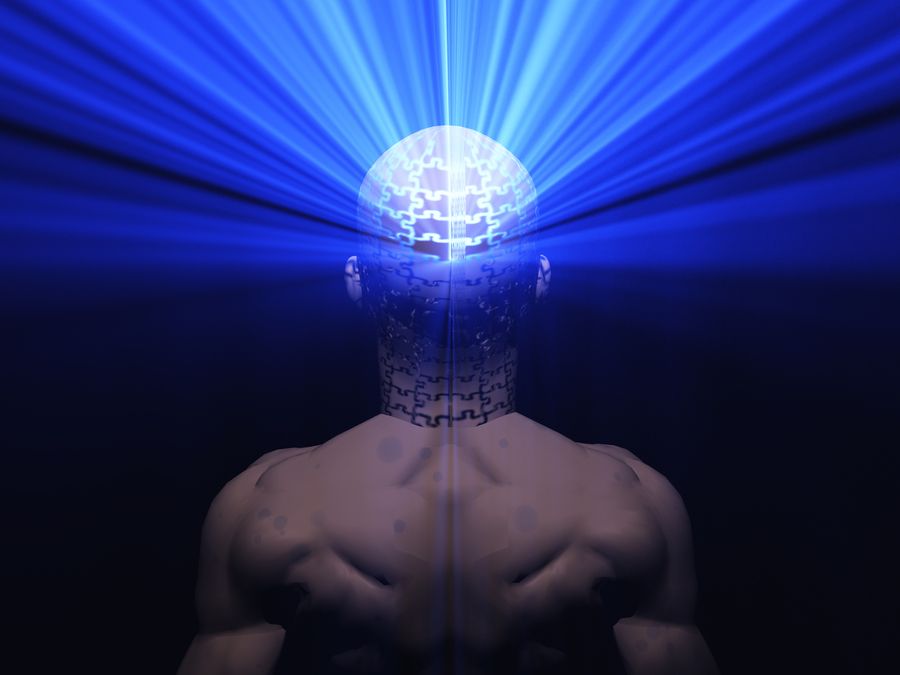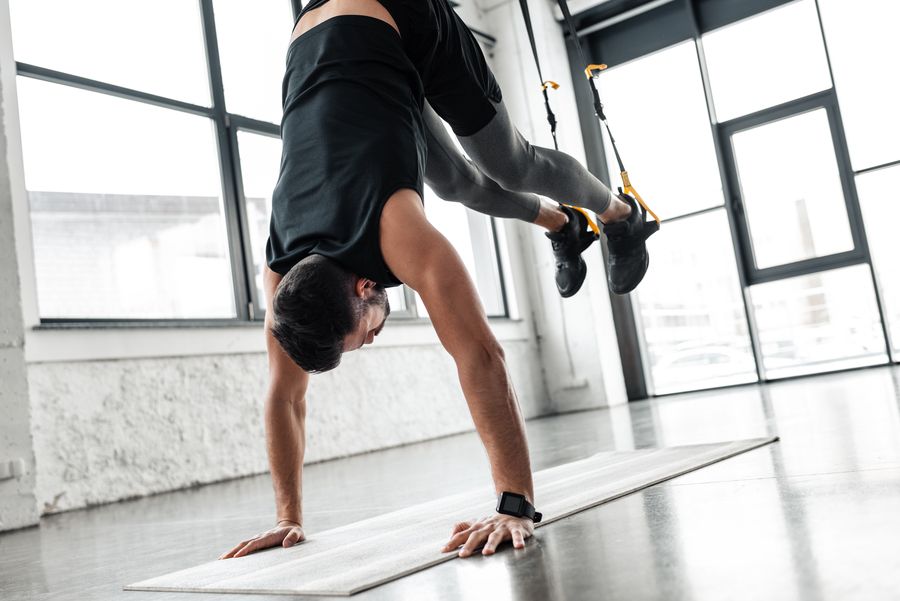Think yoga is for middle aged women and old men?
Then you obviously haven’t tried it.
A lot of people, who haven’t given it a go, seem to dismiss yoga as not being ‘real’ exercise. The reality couldn’t be further from the truth.
Not only is yoga physically challenging but it also has a proven ability to engender calmness and tranquility in a person’s life.
Plenty of research is beginning to emerge that is starting to show the extreme health benefits of yoga- both for mental and physical health.
In this article, we explore the many different ways yoga can boost your overall well-being.
Before you consider starting yoga, it’s important that you don’t overestimate you’re ability to master it and go for an extremely difficult class as a beginner. Other than avoiding injuries, easing yourself through any physical activity is the best way to achieve the optimal results.
Secondly, you should be warned that if you attend a yoga class that does focus on the meditative part, it won’t be/shouldn’t be as happy and light as is sometimes advertised. Real meditation often brings out negative and possibly traumatic emotions that you’d need to breathe through. If unprepared, this can leave you with adverse emotional effects.
Finally, it’s important that you pick a yoga-instructor that is certified and has a legitimate science-based knowledge about the topic. Yoga has become incredibly popular, and because of that, you could find plenty of videos or classes with instructors that don’t actually know much about the discipline.
What Is Yoga?
Yoga is a spiritual and ascetic physical discipline that’s deeply rooted in Hindu culture. It involves getting into difficult body postures with mindful breath control as a way to practice physical, emotional and spiritual balance through concentration, meditation and relaxation.
The term ‘yoga’ comes from the Sanskrit word ‘yoke,’ which means ‘union.’ Yoga practices are usually centered around the goal of getting closer to the concept of ‘God,’’nature’ or ‘the universe,’ depending on your worldview. Jiu-Jitsu champion Nic Gregoriades described it as “the martial art you do against yourself.”
The Different Types Of Yoga

There are now over 100 different types of yoga, but there are six main branches from which all of them extend:
- Hatha Yoga: Achieving oneness using the energy of the body (Yoga of energy)
- Karma Yoga: Achieving oneness through the path of selfless service, or ‘work.’ (Yoga of action)
- Jnana Yoga: Achieving oneness through the path of philosophy, wisdom and knowledge (Yoga of the mind)
- Bhakti Yoga: Achieving oneness through the path of devotional love and surrender to God (Yoga of the heart)
- Mantra yoga: Achieving oneness through the repetition of sacred mantras. (Yoga of sound)
- Raja/Ashtanga Yoga: Achieving oneness through meditation, contemplation and self-reflection through the eight-limbed path. (The royal path of yoga)
The branch that has gained the most popularity and from which most modern-style yoga is derived is Raja Yoga (the royal path).
Raja yoga explores what is called the “eight limb system”:
- Yama– Our relationship with the external world.
The proper moral restraints we should have: kindness, truthfulness, non-stealing, moderation and generosity. - Niyama– Our relationship with ourselves.
The five positive personal aptitudes are: purity, contentment, perseverance, self-study and surrender to larger principles - Asana– Our relationship with our body.
Getting into postures that focus on healing: postural, neuromuscular, visceral, endocrine and circulatory systems. - Pranayama– Our mind-to-body connection, linked with mindful breathing
- Pratyahara– Our ability to look inward and ignore distractions (Sensory control)
- Dharana– Our ability to pay conscious attention to one object (Concentration)
- Dhyan– Our ability to pat conscious attention to one object for a long period of time (Meditation)
- Samadhi– Reaching super-consciousness, or oneness with the universe, or God. (Union state)
Throughout the decades, many different forms of yoga were created, and many of them are now blends of different branches put together. Here are some of the ones you would commonly find classes for:
| Types of yoga | Literal translation | Description |
|---|---|---|
| Ashtanga yoga | Ashtanga literally translates to “eight limbed,” also called “classic Indian yoga” | Focuses on all eight limbs of yoga. 20th century ashtanga is usually focused on physical postures. (Sometimes combined with vinyasa yoga) |
| Hatha yoga | Hatha literally translates to “force” | 20th century hatha yoga focuses on ‘asanas’ (or physical postures) |
| Kundalini yoga | Kundalini means the “coiled” divine energy located at the base of the spine | 20th century Kundalini yoga combines pranayamas, asanas, and body locks called “bandhas” (A blend of bhakti, raja and Shakti yoga) |
| Iyengar yoga | Named after founder | A form of hatha yoga that focuses on physical postures and breath control |
| Vinyasa yoga | Vinyasa translates to “repetitive linked movements.” Also called “flow yoga” | 20th century vinyasa yoga focuses on smooth transitions between physical postures with breath control. |
| Yin yoga | Based on Taoist principles of Yin and Yang. | A ‘slow,’ more meditative yoga with physical postures held for a longer period of time. |
| Acro yoga | Acrobatic yoga | Combines vigorous traditional yogas, acrobatics and thai massages. |
| Hot yoga | - | Any form of yoga done in a heated room |
| Power yoga | - | Any vigorous, fitness-based vinyasa or ashtanga-style yoga |
| Restorative yoga | - | Any yoga style done slowly and allows opening of body through passive stretches using props. |
| Anti-gravity yoga (aerial yoga) | - | Combines yoga with pilates and dances with hammocks and hoops hanging from the air. |
Yoga has become so popular that there are even more bizarre/creative new yoga deviations available:
| New Creative Yoga Trends | Description |
|---|---|
| Doga (dog yoga) | Any form of yoga done with your dog. Creates bonds with pets |
| Goat yoga | Any form of yoga done with a goat climbing onto your back |
| Naked yoga | Any form of yoga done without clothes |
| Bieryoga (beer yoga) | A yoga creation where yogis go to breweries for a yoga session and have beer during it. |
| Ganjasana/Cannabis yoga | Any form of yoga while on cannabis. |
How Does Yoga Work?

Although it is usually underestimated, yoga is actually a pretty tough full-body workout that helps give you core strength, tones your muscles and makes you more flexible.
However, the unique benefit of yoga is that it helps strengthen and expand your mind-to-body connection. Often times, even general fitness instructors would tell you that exercise starts in the mind, meaning that your athletic performance is aided by your belief that:
- Your muscles and your cardiovascular system can handle more exercise than you think
- Your mind can help ease physical pain
Because yoga has a meditative aspect to it that forces you to restructure your thoughts and feelings through breath control, concentration and positive reinforcement, doing that while trying to get into difficult physical postures and stretches helps actively show you your how your mind and your body are connected.
The meditative aspect of yoga alone, without the physical postures, can also help you restructure your thoughts and feelings for better/more grounded emotional wellbeing. This can make you relaxed and calm enough to carry out physical postures more effectively.
To understand yoga’s health benefits, we first have to fully grasp the extent of the mind-to-body connection.
How The Mind Affects The Body

The scientific community has had a strong recognition for the incredible connection between the mind and the body for a very long time.
For example, every reliable scientific experiment designed today has a “placebo group,” where participants are unknowingly given an inert treatment rather than the actual product/service that they’re testing in order to make sure its benefits aren’t just because the participants believe it will benefit them.
We almost always find some impact in placebo groups- some with almost identical effect sizes as the actual treatment. And this doesn’t just apply to subjective experiences of the treatment, this was also found to be true in terms of measurable benefits, such as improved symptoms of chronic illnesses, and even things like reduced tumor size, cancer remission, and torn-ligament recovery.
All of these are psychosocial concepts that are explored and validated in traditional yoga.
Science has also found plenty of biological links between depression, anxiety & social isolation and things like chronic fatigue, immune suppression, cancer development, blood pressure problems, thyroid problems, hormone imbalances and more. So it’s generally very clear to the scientific community that emotional states are very much connected to our physical well-being.
The science and philosophy behind perception proves this to be an even deeper reality. Robotics engineers have found that even our brain’s ability to “see” objects is very reliant on how “meaningful” we find these objects. For example, because tables can physically hurt us if we bump into them and people we like/relate to, react to them (by putting things on them or walking around them), we develop a cognitive reason to piece together the collection of colors reaching our eyes to mentally consolidate it as a “table.”
In other words, even in what we see, we’re seeing “meaningful phenomena,” not the objective world. Reality drives meaning, but meaning is also drives our reality. Therefore, it only makes sense that our physical condition is more malleable to our emotional/spiritual condition than we usually think.
How The Body Affects The Mind
You may have also heard the various ways physical well-being profoundly affects emotional well-being:
- Physical exercise releasing endorphins, which have a positive effect on mood
- Perception of physical capacity and strength affecting confidence and self-esteem
There are also other ways in which different physical activities is linked to emotion you may not have heard of.
Muscles And Emotional Trauma

Psychologists often point out the connection between our muscles, anxiety and emotional trauma. One way of putting it is that we actually “store” emotional trauma in our muscles.
One simple example is grinding our teeth when we’re anxious. After doing that instinctively several times, our brain begins to associate jaw tension with these emotions, and so massaging our jaw muscles would help release them and consequently feels good.
There are plenty of other muscles that we commonly tense up from anxiety, such as our shoulders, our fists, our feet and more. This extends to various other muscles in our body, each very unique to every individual. Yoga exercises such as deep stretches helps release those emotions.
This is why one common physical symptoms of depression and anxiety is muscle fatigue.
This is also why therapists often help patients with anxiety by helping them identify the muscles that they tense up when they’re anxious, and then making them contract and relax them.
Expanding The Motor Cortex
The brain has neurons that connect to all the different muscles in our body. This keeps our brain aware of what the body is doing at all times. When we stretch in the morning, this is a way we instinctively remind the brain how far the body extends and consequently “wakes us up.” It also invigorates the brain and lets it know we’re about to partake in activity that requires relatively more energy. This happens through increase of blood flow, a sudden release of endorphins etc.
When we take this to the next level and go into deep stretches, this increases blood flow to “silent” corners of our muscles that weren’t very used to being activated. As we get more flexible and more mobile, this technically shows the brain that it’s in touch with more of the body than it “thought,” which gives us an enhanced sense of control, ultimately improving well-being.
Yoga poses that focus on balance also tend to give you a heightened sense of control over the different parts of their body, which many yogis describe as a realization that brings them peace.
Yoga’s Proven Health Benefits
The anecdotal, subjective accounts of how yoga has done wonders for people are endless, and we still haven’t fully understood how it tends to help so much. However, there are plenty of remarkable physical and mental benefits that yoga has been proven to provide:
Yoga On The Brain
Studies have examined people who have been practicing yoga for about 9 years and found that their brain structures are actually pretty different from those who never/rarely practice yoga. The people who practiced yoga had:
- More gray matter- which helps you take care of muscle control and sensory perception, and generally enhances self-awareness.
- Enlarged hippocampus – which means improved learning and memory processes, and enhanced mood
- Enlarged parietal cortex- a structure that helps you concentrate on specific objects
- Enlarged somatosensory cortex- the mental map of your body’s sensations
- Enlarged posterior cingulate cortex- a structure that enhances the sense of self and identity
- Decreased gray matter in the amygdala- a structure responsible for anxiety and negative emotions.
- Increases cortical folds- which improves information processing, decision making and memory (also associated with reduced cognitive decline in old age)
Yogis’ brains also showed improved chemical composition:
- Increased GABA levels (during and after yoga sessions)- a neurotransmitter that regulates pain perception and makes you feel relaxed and calm.
- Increased dopamine and serotonin levels- neurotransmitters that make you feel rewarded and happy
- Decreased cortisol levels- neurotransmitters released due to stress that tends to decrease self-control and discipline.
Helps With Several Mental Illnesses
All this improved brain chemistry yoga produces shows great promise for mental illnesses and mood-related disorders. It’s often prescribed alongside mainstream medications.
Depression & Anxiety
Yoga is so helpful to depression and anxiety disorders that it’s sometimes prescribed as the sole treatment, depending on the severity of the illness. Yoga seems to ameliorate people’s symptoms of depression both on the short-term and long-term. It shows even more promise for anxiety disorders, as it seems to regulate people’s exaggerated stress responses.
Yoga has also shown to help people sleep better. Sleep disorders is often a symptom of both depression and anxiety.
Schizophrenia & Psychotic Disorders
Yoga is also usually prescribed as an add-on treatment to people on the schizoaffective spectrum. Studies show that long-term yoga practice can at least temporarily improve social cognition in schizophrenic patients!
It does this by promoting the activation of “mirror neurons,” which are the neurons we use to empathize or put ourselves in other people’s shoes. These types of neurons are usually diminished in a schizophrenic brain.
Potential For Alzheimer’s & Dementia?
Since Kundalini yoga has been shown to significantly improve executive functioning on both the short- and the long run, yoga also shows potential for being used as a treatment for illnesses like Alzheimer’s and dementia.
Enhanced Athletic Performance

Yoga has also been shown to significantly improve athletic performance. This is largely because of its ability to increase mobility and flexibility, improve balance and muscle control, perception of pain, cardiorespiratory fitness, as well as generally improve your ability to focus. You may find yourself just relaxed enough to be able to handle a heavy gym workout with calmness and confidence.
But yoga has also been shown to significantly improve your performance in specific sports:
- Swimming speed– largely because of improved lung functions
- Running speed– especially hot yoga
- Sports that require mental and social functions, such as game-sports and martial arts.
The Brazilian jiu-jitsu champion Rickson Gracie is one example of a martial artist who many people suspect owes his success to his strict adherence to yoga. Rickson said that through yoga, he learned to “breathe with his movements.” He said that by focus on exhaling, inhaling naturally followed without requiring much energy, which helped him during his fights.
Plenty of fighters also practiced yoga, including Conor McGregor, Royler Gracie, Murilo Bustamante, Nic Gregoriades , Margarida, Wallid Ismael, and many more.
The best advice about reaching your full athletic potential through yoga is to really try to push the boundaries of what your body and mind can do together. You may discover a benefit not yet understood by science.
Other Benefits:
Yoga also has plenty of other benefits, including for:
- Chronic pain: It’s often prescribed to veterans and people in the military.
- Eating disorders among adolescents (although it had no effect on BMI).
- Rheumatoid Arthritis: Significantly reduces flare-ups and severity, and subjective quality of life.
- Muscle gains and strength, especially when accompanied with a supplement like Testofuel.
Key Points
Yoga Is Great For. . .
- Core Strength
- Muscle Tone
- Flexibility
Mental Benefits . . .
- Improves Brain Functioning
- Helps Defeat Depression and Anxiety
- Potentially Helps Fight Alzheimer's
Physical Benefits . . .
- Boosts Athletic Performance
- Improves Cardiovascular Fitness
- Enhances Balance




